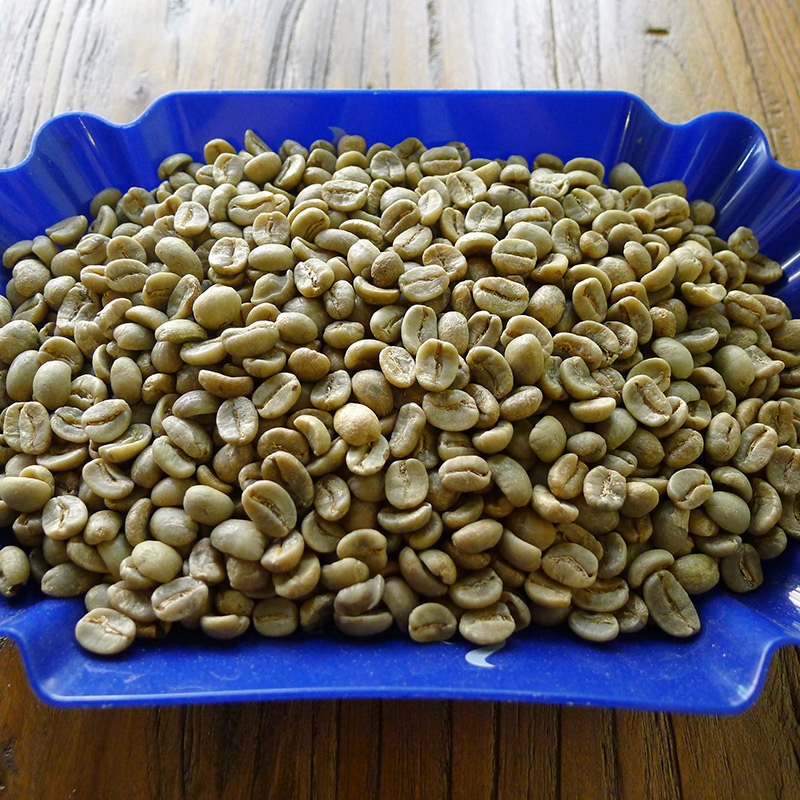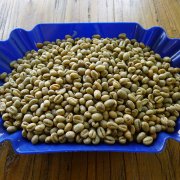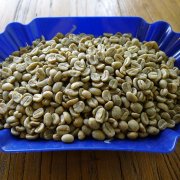Honduras Water washing treatment SHB Grade Saint Rose treatment Plant Rainforest Certification for roasting Coffee beans

Coffee beans details:
Country: Honduras
Grade: SHB
Producing area: Kobang province
Altitude: 1500-2000 m
Treatment: washing
Variety: Kaddura, Kaduai, bourbon
Producer: holy Rose processing Plant
Flavor: cream, brown sugar, melons sweetness
In 1804, Honduras began to grow coffee, and now there are 280000 hectares of coffee plantations, mainly small coffee farmers, who account for 60% of Hongguo's coffee production. In 2011, Honduras produced more coffee than Guatemala, and in 2012 it became the second largest exporter of washed Arabica beans in the world, after Brazil. It now ranks seventh in global production. Coffee cultivation is not owned by the oligarchs of large consortia in the United States like banana plantations. 92% of coffee farmers in Honduras are small individuals, and coffee-related workers account for 12.5% of the total population of 8 million, so coffee is a very important crop in Honduras. In the coffee garden, coffee farmers harvest red fruits, wash and ferment them and grade them according to the needs of the market to meet the different tastes of consumers. Honduras collects 3 million bags of coffee every year, supplying good quality coffee and unique coffee flavor, quantity and quality, and has become the largest producer in Central America and the top ten coffee exporters in the world. The coffee industry in Honduras involves the livelihood of hundreds of thousands of families across the country and provides 1 million jobs, making it an important economic agriculture in Honduras.
The average planting height of Choluteca, Francisco Morazan, La Paz, Siguatepeque, Santa Barbara, Intibuca, Copan and Ocotepeque., in the western and southern producing areas of Honduras coffee is more than 1100 meters above sea level. Coffee varieties are 100 per cent Arabica, 69 per cent are HG and 12 per cent are SHG,19% and CS. The main varieties of coffee are Typica, Bourbon, Caturra, Villa Sarchi and Lempira. Honduras coffee has always maintained high quality, and its price is the most competitive in Central American countries. Small, round, light bluish green coffee, mild sour, full and slightly sweet, suitable for mixed coffee or single coffee, suitable for medium to deep roasting, mainly exported to the United States, Germany and Japan. Honduras is already the largest coffee producer in Central America, and its production has been increasing in recent years. Due to high international coffee prices in 2012, the output of coffee in this year exceeded 5 million bags in 2010, resulting in a great increase in production and continuous improvement in quality.
This batch of Holy Rose processing Plant (Beneficio Santa Rosa), from the Holy Rose place in the western province of Columbine, is a small cooperative of the local community, established in 2005 and supported by a non-profit organization, TechnoServe, to provide production technology and poverty eradication. The cooperative established a Mejoramiento Agra í cola Sostenible (MAS) assistance program to support 6000 families of small coffee farmers and provide technical assistance with the aim of producing high quality coffee beans. Coffee is planted from 1500 to 2000 meters above sea level. The main varieties of coffee are Caturra, Catuai, Bourbon and Pacas and Typica. Flavor reference: sweet, cream, brown sugar, melon sweet, mint, caramel milk. The acidity of the fruit is not obvious, it is layered and has a strong sweet taste of caramel. The aroma is harmonious, the taste is full-bodied, the flavor is sweet, warm and smooth.

Rainforest Alliance RFA (Rainforest Alliance) Certification
Is a non-profit international non-governmental environmental protection organization whose mission is to protect the global ecosystem and the human and wildlife that make a living by changing land use patterns, business and consumer behavior.
Tropical rain forest certification
Rainforest Alliance RFA (Rainforest Alliance) certification refers to a farm that meets the standards set by the Rainforest Alliance, which protects the farm and its surrounding ecosystem, imposes some restrictions on the use of pesticides, and evaluates benchmarks such as waste management. Only coffee that has been evaluated and certified can be called "Rainforest Alliance certified coffee". Among them, the certification benchmark for coffee stipulates that traditional farming methods cultivated in the shade of primary forests are adopted, which are beneficial to the protection of the ecosystem. Some of the proceeds from the alliance are also used for the protection of wildlife in tropical rainforest animal reserves and the improvement of workers' living standards.
The farm that meets the benchmark established by the Tropical Rainforest Alliance will evaluate the benchmarks such as ecosystem protection, pesticide use restrictions and waste management in and around the coffee plantation. Only the coffee that has passed the benchmark and is certified, can be called "Tropical Rainforest Alliance certified coffee". In addition, part of the proceeds are also used for wildlife protection in tropical rainforest animal reserves. In terms of labor life and well-being, it is a pair of coffee with a good natural environment. The certified benchmark is composed of three sectors of nature conservation, farming methods and regional society, from the protection of forests to water pollution, the working environment of employees, the use of chemical fertilizers and waste disposal. The certification benchmark for coffee stipulates that it is adopted, which is the most beneficial to the protection of the ecosystem, and is the traditional farming method of shade cultivation in the primary forest.
Important Notice :
前街咖啡 FrontStreet Coffee has moved to new addredd:
FrontStreet Coffee Address: 315,Donghua East Road,GuangZhou
Tel:020 38364473
- Prev

Tanzania Kilimanjaro pearl PB round beans Gillemaza washed bourbon African coffee beans
Coffee bean details: country: Tanzania grade: round bean PB producing area: northern highland Kilimanjaro volcano area altitude: 1300-2000m treatment: washed variety: bourbon producer: local small farmer collection flavor: apricot, date, spice, malt chocolate Mount Kilimanjaro (Mt Kilimanjaro), the highest peak in Africa, stands in the northeast of Tanzania.
- Next

Coffee cooked beans from Huilan, Colombia, Vera plateau, San Isidro, washed and roasted at home.
Coffee beans details: country: Colombia altitude: 1650-1850m production area: southern producer of Huilan Province: San Isidro small Farmer treatment: washed varieties: Caturra, Colombia Flavor: hazelnut, Almond, Dark Chocolate, Caramel Award record: 2013 Colombia COE Excellence Cup first introduction: Colombia is the world's largest coffee production
Related
- Detailed explanation of Jadeite planting Land in Panamanian Jadeite Manor introduction to the grading system of Jadeite competitive bidding, Red bid, Green bid and Rose Summer
- Story of Coffee planting in Brenka region of Costa Rica Stonehenge Manor anaerobic heavy honey treatment of flavor mouth
- What's on the barrel of Blue Mountain Coffee beans?
- Can American coffee also pull flowers? How to use hot American style to pull out a good-looking pattern?
- Can you make a cold extract with coffee beans? What is the right proportion for cold-extracted coffee formula?
- Indonesian PWN Gold Mandrine Coffee Origin Features Flavor How to Chong? Mandolin coffee is American.
- A brief introduction to the flavor characteristics of Brazilian yellow bourbon coffee beans
- What is the effect of different water quality on the flavor of cold-extracted coffee? What kind of water is best for brewing coffee?
- Why do you think of Rose Summer whenever you mention Panamanian coffee?
- Introduction to the characteristics of authentic blue mountain coffee bean producing areas? What is the CIB Coffee Authority in Jamaica?

